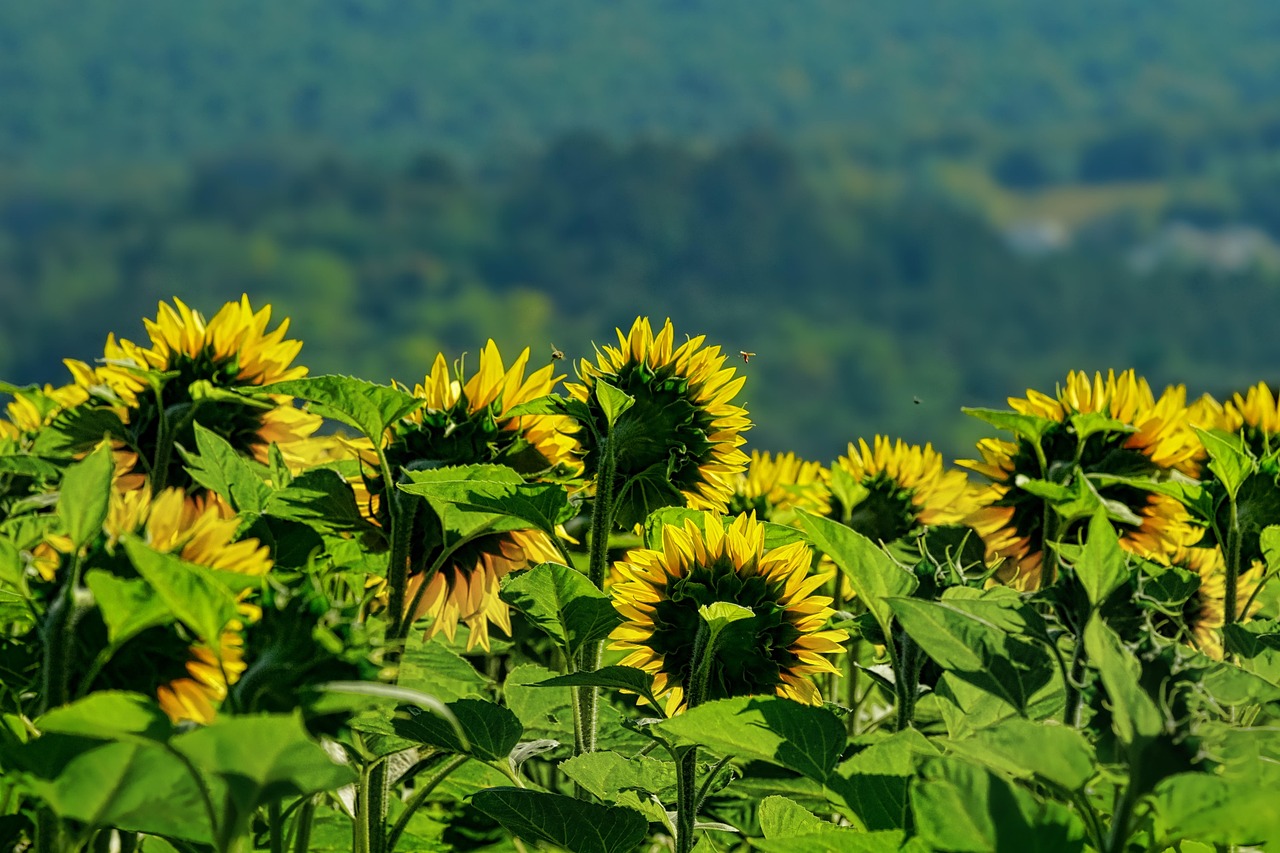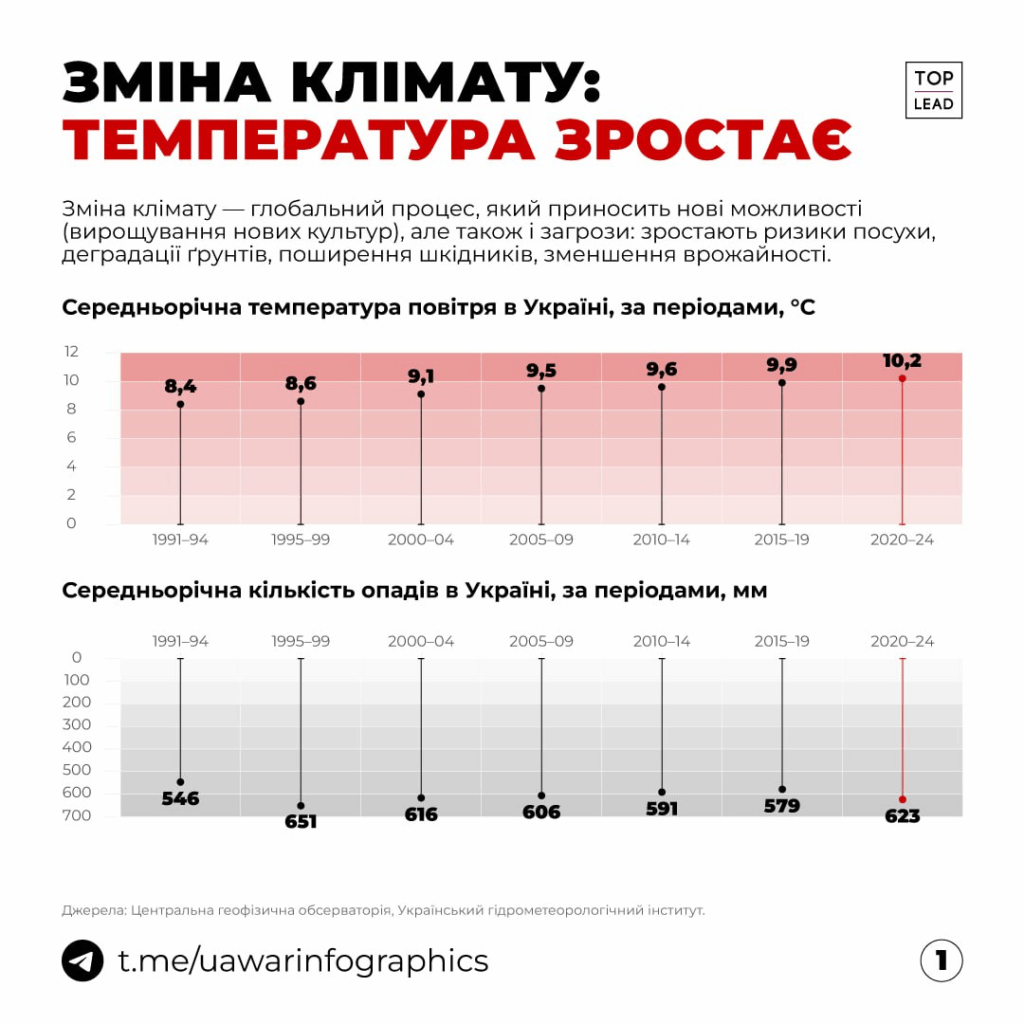Ukraine is warming by 1.8°C: which 7 regions will be the first to feel the heat
10 November 21:40
The temperature in Ukraine is steadily rising and will increase by another 1.5°C by 2040. Seven regions of the country will be at the epicenter of the heat wave, "Komersant Ukrainian" reports, citing an infographic by the Top Lead Visual Communications Agency.
Climate change is becoming more and more noticeable in Ukraine. The last three decades have seen a steady increase in average annual temperature, which is changing not only the country’s environmental but also its economic reality. According to the Central Geophysical Observatory and the Ukrainian Hydrometeorological Institute, the average temperature in Ukraine rose from 8.4°C to 10.2°C between 1991 and 2024. This is the highest figure in the last 29 years of observations.
Temperature is rising, precipitation is unstable
According to the infographic, the temperature increase has been steady in every five-year period. If in the mid-1990s the average temperature hovered around 8.6°C, in 2000-2004 it reached 9.1°C, and after 2020 it exceeded 10°C.
At the same time, precipitation is increasingly uneven. The average annual amount of rain and snow changed in waves – from 546 mm in 1991-1994 to 651 mm in the late 1990s, and then dropped again to 579 mm in 2015-2019. The last time, in the period 2020-2024, the figure rose slightly to 623 mm, but the trend of overall instability persists.

These fluctuations indicate a climate imbalance: along with overall warming, Ukraine is facing prolonged summer droughts and short but intense rainstorms that lead to soil erosion and flooding.
Climate change and global warming: where it will be hottest in Ukraine
Forecasts for 2020-2040 leave no doubt that warming will continue. The largest temperature increase is expected in the central, eastern, and southern regions, where the average increase could reach 1.6 to 1.8°C. The Carpathian region is expected to see the least change: the temperature there will rise by 0.6 to 0.8°C.
The map of temperature changes shows: Kyiv, Chernihiv, Zhytomyr, Vinnytsia, Khmelnytsky, Ternopil, and Cherkasy regions will be at the epicenter of climate heating. This means an increased risk of water shortages, droughts, lower yields, and a greater likelihood of destructive weather events.
It will also become hotter in parts of Poltava, Kirovohrad, Odesa, Mykolaiv, Rivne, Sumy, and Zakarpattia regions.

The impact of climate change on the economy: from the agricultural sector to the energy sector
Rising temperatures have a direct impact on agriculture, the mainstay of Ukraine’s exports. Higher average annual temperatures allow for the cultivation of new crops, including sun-loving fruit and grape varieties, but also increase the risk of crop losses due to lack of moisture.
Agricultural experts estimate that by 2035, the area of land prone to droughts could increase by a third. The most vulnerable will be the southern regions, where yields could fall by 30-40% without irrigation systems.
In addition, warming increases the burden on the energy sector: electricity consumption for cooling buildings is growing, and the risk of accidents in the summer due to overheating of infrastructure is increasing. At the same time, short but powerful rains put additional pressure on reservoirs and hydroelectric power plants.
Watch us on YouTube: important topics – without censorship
Urbanization and climate challenges
Instead, Ukrainian cities feel the warming effect most strongly through so-called “heat islands,” where concrete and asphalt trap heat and thus raise the temperature by several degrees compared to the surrounding areas.
Kyiv, Dnipro, Odesa, and Kharkiv are already recording an average temperature increase of 1-1.5°C compared to their suburbs. This means a greater need for green spaces, water bodies, and innovative urban planning solutions.
But despite the threats, climate change also opens up new economic opportunities. Warming makes it possible to expand the range of crops and extend the growing season. Ukraine may become one of the regions where it is possible to grow heat-loving grape, olive, and industrial crops that previously required more southern conditions.
The government and scientific institutions should already be actively developing adaptation strategies, from switching to drought-resistant grain varieties to modernizing the irrigation system. Reducing greenhouse gas emissions, developing renewable energy, and protecting ecosystems that naturally curb climate change remain a priority.
Read us on Telegram: important topics – without censorship









